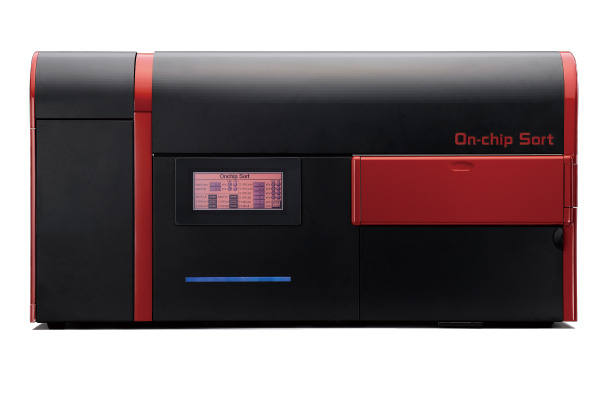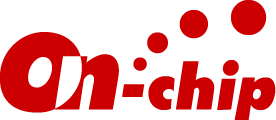On-chip Sort is the world’s first flow cytometer employing a microfluidic chip. It offers several advantages, such as damage-free, sheath fluid-free, and the ability to sort large cell. In addition, the disposable microfluidic chip allows the user to provide easy-to-use and cross-contamination free operation. This enables handling of a wide range of samples, including previously difficult-to-handle samples such as nerve cells, sperm, and cell clusters.
Damage-free sorting
Effect on phenotype
Conventional cell sorters generally employ the electrostatic sorting such as Jet-in-Air methods. These cell sorting methods have been recognized to cause morphological changes, growth retardation, decreased viability, and changes in gene expression after sorting due to “Sorter-Induced Cellular Stress” (SICS, Lopez, P. (2018) CYTO2018) that cells undergo during the sorting process, gene expression changes, etc. after sorting. The microfluidic Cellular Stress sorter has a unique sorting mechanism that eliminates the cell-damaging steps associated with conventional methods and significantly reduces SICS.
[ cell growth ]
Sorting and culturing stress-sensitive hippocampal neurons
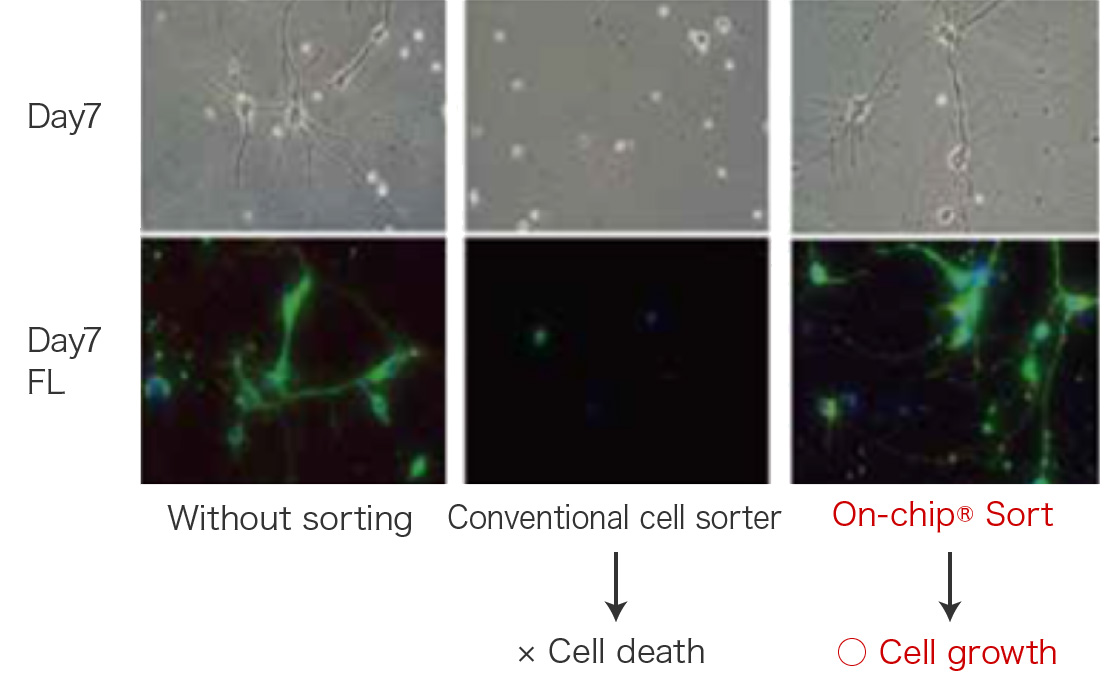
[ cell morphology ]
Observation of eosinophils in peripheral blood after sorting
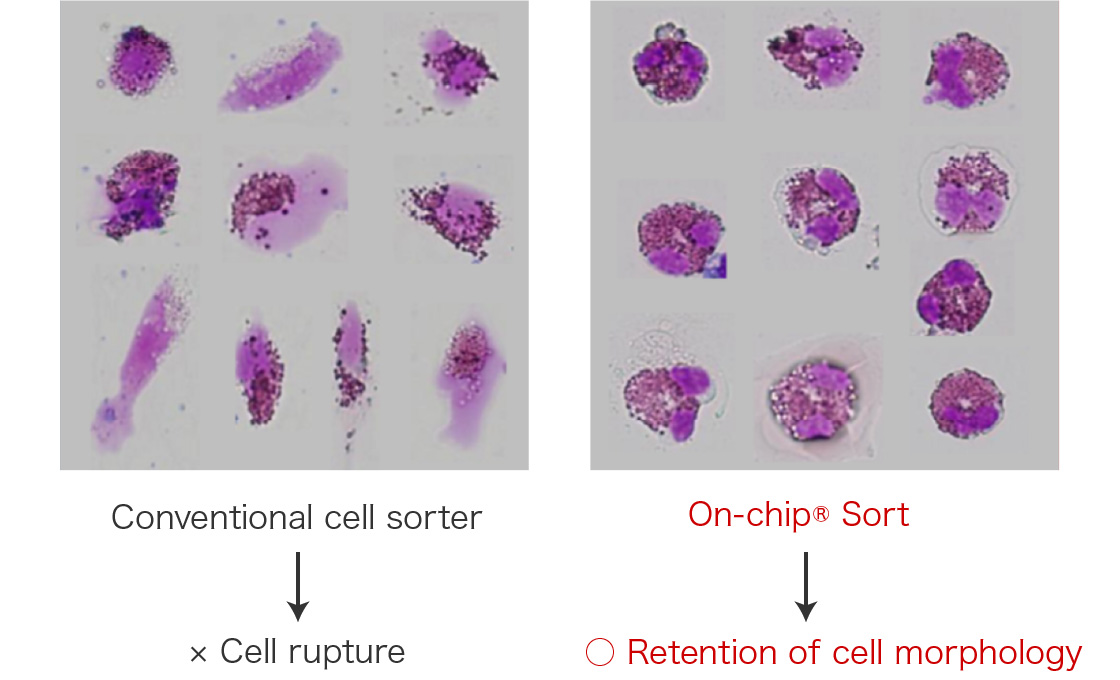
Collaboration with Dr. Ikuro Suzuki, Tohoku Institute of Technology
Effects of sorting on gene expression
The changes in gene expression levels were investigated after sorting using On-chip Sort and a conventional cell sorter. For genes related to cell proliferation and apoptosis, which affect cell growth, it was found that the amount of genetic change was smaller when sorting was performed using On-chip Sort.
In addition, for all the data analyzed, the number of genes whose expression patterns changed significantly was only about one-fifth of that sorted using a conventional cell sorter.
These results suggest that the genetic change induced by sorting on On-chip Sort is less than that on conventional sorters.
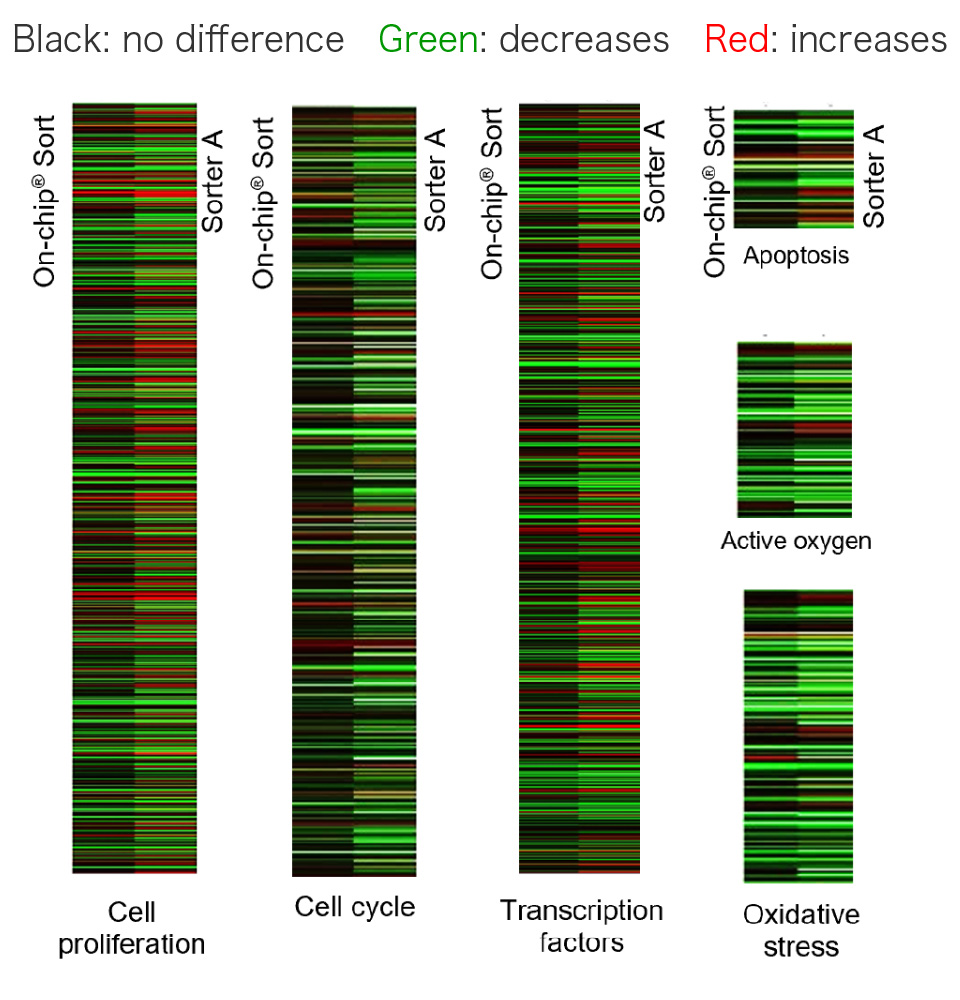
Cell-cell complexes
On-chip Sort is able to isolate cells that are held together by weak bonds, even those that can easily be dissociated by pipetting. Figure shows the isolation of cell doublets (green and red cells) held together by weak intercellular interactions from a heterogeneous cell mixture.
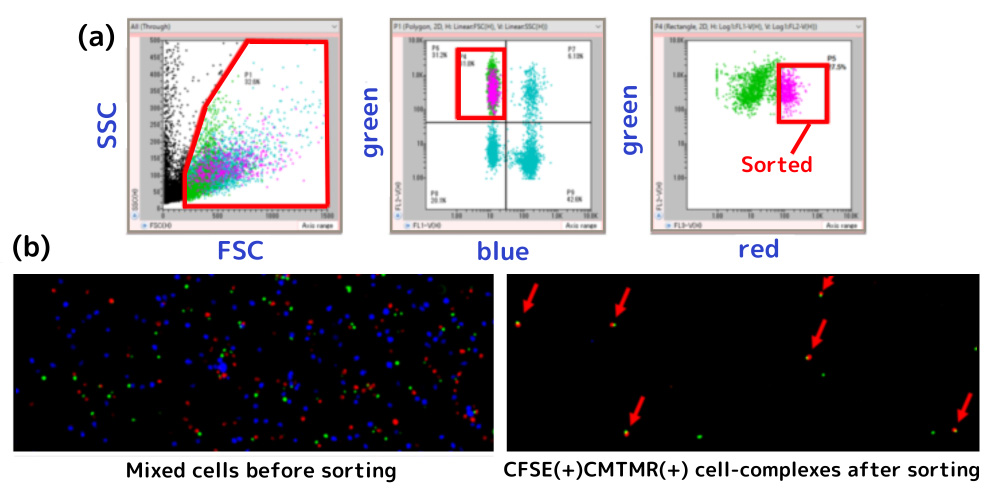
Sorting of cell clusters and large particle
Spheroid sorting
Drug susceptibility using spheroids (3D clusters of cells) is effective for efficacy evaluation of cancer treatments. On-chip Sort can sort spheroids of a particular size from a spheroid culture or clinical materials for the purpose of preparing a monodisperse spheroid sample.

Freedom of sheath fluid of your choice
Protists sorting
On-chip Sort allows the use of any sheath fluid of your choice, including saline, culture medium, and oil, in order to maintain the samples at their physiological condition and minimize the cell damage during sorting.
Using a conventional cell sorter to sort those protists remains a challenge, because some protists are large and a specific solution has to be used as sheath fluid to prevent osmotic pressure-induced cell damages during sorting. On-chip Sort showed to successfully sort out large protozoa.

See the follwing page for details of On-chip Sort, a cell sorter using microfluidic chip technology.
